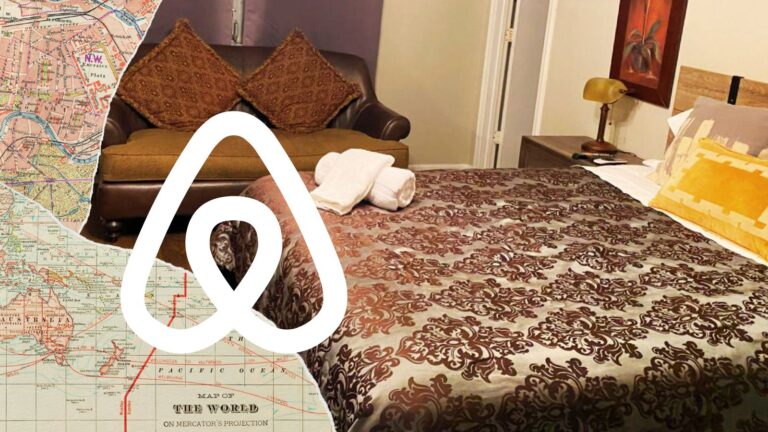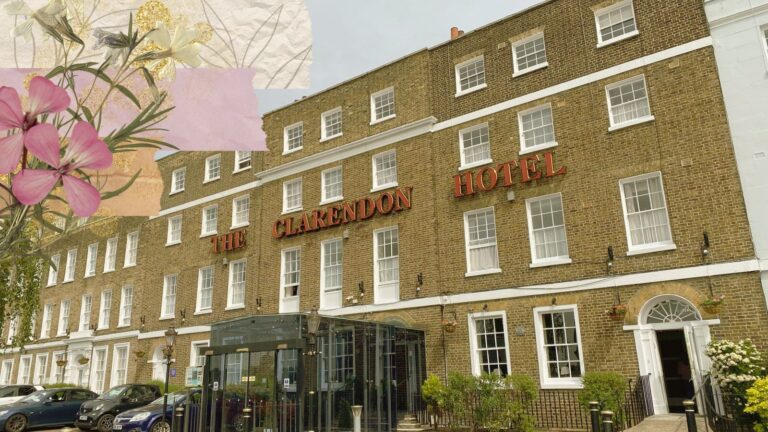Save Money! Stay in Student Dorms
Finding a decent place to stay while traveling the United Kingdom on a budget can be tricky. Not only do you want to watch your wallet, but you’d like to be comfortable as well.
If you don’t want to stay in a hostel, but you’d rather not spend ALL your money on a hotel room, then I’ve got a great solution for you!
If you’ve read the title then you know it already…stay in student dorms!
Just Gone Wandering is supported by readers! This post contains affiliate links. If you click on a link and buy something, I get a small percentage at no extra cost to you. Your support helps keep this blog running— thank you! Read full disclosure here.
Student dorms…for non-students!
What happens to dorm rooms when the students have gone home for the semester?
They get rented out to travelers, as it turns out!
This is perfect for travelers who want to go somewhere in the summer and part of winter, as those are the times that students will be OUT of the dorms. Anyone can rent the dorms during the non-student times, even people who aren’t student themselves.
Rather than fork over $100 USD+ for a hotel room, snag a dorm room for half the cost!
Related: Where to stay while traveling in the UK.
That said, staying in student dorms does limit you to visiting towns that have larger universities, as those’ll be the ones that get rented out. But if you don’t mind that, then you probably won’t mind the other awkward things about staying in a student dorm.
My experience in student dorms
I stayed in student dorms in:
- Newcastle, UK (ensuite double, no kitchen)
- York, UK (ensuite double, no kitchen but free coffee/tea)
- Coventry, UK (ensuite double, shared kitchen)
They all varied in amenities and prices, but the actual experience was roughly the same. All of them were private rooms with an ensuite bathroom, and they all came with free Wifi. They were significantly cheaper than other places with private bathrooms, though not as cheap as, say, a shared dorm in a youth hostel.
Most often my problems came from the beds (comfort or size), missing amenities (soap! trash bin!), or noise from neighbors slamming their doors at all hours. Sometimes they had cleanliness problems or weird smells in the hallway. Also, there’s no housekeeping during your stay, and I had to keep asking the front desk for toilet paper.
On the tourist side of things, the dorms were often in ugly parts of town and set back from the main area. A little annoying for planning activities, but otherwise nothing major.
Think of student dorms as equivalent to hostels; they’re NOT on the same level as a regular hotel or even a B&B, and usually there’s something wrong or missing or annoying. If you’ve never stayed at a hostel you might be in for a shock, but if you’re a seasoned hostel-er then it’s a very familiar experience.
What’s good about dorms that they’re an excellent option for cheap ensuite private rooms, particularly in bigger cities. Some of the better ones will also give you access to the other dorm amenities, such as a laundry room or gym, and you might get a kitchen! And the surrounding neighborhoods usually have a good range of cheap grocery stores, restaurants, and venues.
Plus, they all come with a dedicated desk area, which is fantastic if you need to do some work. These desks were the most comfortable I’ve had in all my stays so far, and I got a lot of writing done.
I didn’t find them extremely different from staying in B&Bs or private hostel rooms, which also have noise problems and weird smells and can be in ugly places. For the chance of a cheap private room in high tourist season, I could handle all the annoyances.
Finding a student dorm to book
Mine were all booked on Booking.com, but they were also listed on AirBNB for about the same price. I prefer using Booking.com when I can because of the extra discounts/membership benefits, etc.– and the reviews tend to be more detailed than on other websites.
As far as I can tell, the universities (and/or companies who run the dorms) hire third party companies to handle the booking of their dorms. This can lead to some communication issues, especially if the front desk isn’t staffed 24/7, but for the most part it’s been fine.
Actually FINDING student dorms to book is a little tricky because they’re (usually) not listed as “student dorms” on hotel booking websites.
Finding dorms on Booking.com
- Filter to private rooms with free Wifi, 7+ star rating, private bathroom.
- Go to map view and look for universities, then click around until I see something that looks like a dorm room.
- Check the description, which WILL say that it’s a student dorm.
And that’s it! I’m sure there’s probably an easier way to find these rooms, but this has worked pretty well for me so far.
Booking a student dorm works the same as any other hotel. Select your dates, what kind of room you want, and reserve it. You’ll often get a request from staff for a photo of your ID/passport, and to fill in a form or answering questions for personal info, similar to filling in a hotel info card.
Tip: Use Google Maps to find dorm buildings
You’ll see a lot of reviews mentioning how difficult it was to find the dorm building, or that they had to call the front desk for help. This is because the provided address is usually only a street name, and the rental companies never say the actual name of the dorm building you’re going to. Usually these buildings don’t have numbers, either, and they’re set back a bit from the proper street.
(Why? No idea, but I’m thinking it might have something to do with liability. You’re not renting from the DORM COMPANY (aka the people who own the building), you’re renting from the third party management people. So they won’t say the dorm building name.)
I’ve figured out a mostly foolproof way to get the right location for these dorms.
Get the provided address and then head to Google Maps.
First, plug in the provided address. Make sure it’s a real address– the place in Coventry gave me my room number as part of the street address, which obviously didn’t work. DO NOT use the name of the “hotel” that you booked under; that one won’t be available on Google Maps because they only use it for booking non-student customers.
Second, check for nearby buildings that are labeled “student living” or “student accommodation,” something like that. Depending on where you’re going, there might be multiple dorms nearby, but the ones I’ve stayed at were the only ones on that particular street.
Third, double-check the location with the map provided on Booking.com. Sometimes their map is a little more accurate, for whatever reason. Also double-check cross streets and nearby businesses to see if you’re in the right area. Particularly if reviews mention a specific store that’s near– that’s a great way to narrow down locations.
Fourth, check reviews to see if anyone mentioned how they found the building or if they included photos of the outside.
Using Google Maps, I’ve always been able to find the right building for my dorm rentals. It definitely takes a tiny bit more effort than finding a regular hotel but I suppose that’s part of the adventure.
How much does it cost to stay in a dorm as a tourist?
Overall, despite the many annoyances from staying in a cheap room in a cheap building, I’m glad I stayed in the dorms. I was able to save a significant amount of money on accommodation, particularly in August which is a high tourist month in England.
All that said, I spent just over $1000 USD for 22 nights, which works out to about $49 USD/night. That’s really good for Western Europe, particularly in high tourism season when hotel rooms with shared bathrooms tend to be minimum $80 and often closer to $150 USD.
Saving money on hotels let me spend a little more on tourism, like going on day tours! So it was worth it in the end.
Have you ever stayed in a student dorm as a traveler before? I’d love to hear your experiences! Leave a comment below.
Save on Pinterest


Explore More
European Adventures
- From London to Paris by Eurostar
- A month in Aberdeen | June 2022 Travel budget breakdown
- Visiting Hadrian’s Wall | Solo travel in England
- Visiting the medieval city of Carcassonne, France
- Two months in France | September/October 2022 Travel Budget Breakdown
Best Travel Resources
- 👩💻Stay organized with the Deluxe Travel Planner Spreadsheet
- 🛌Search Hostelworld for budget stays
- ✈️Search SkyScanner for discounted flights around the world
- 😺Join TrustedHousesitters and do petsitting in exchange for accommodation
- 💳Carry Chase Sapphire Preferred for a travel-friendly credit card
- 📱Use Airalo for eSIMs around the world
- 🚙Check DiscoverCars for international car rentals
- 👩💻Snag ExpressVPN to stay safe while browsing the web
- 🧑⚕️Sign up with VisitorsCoverage for trip insurance








